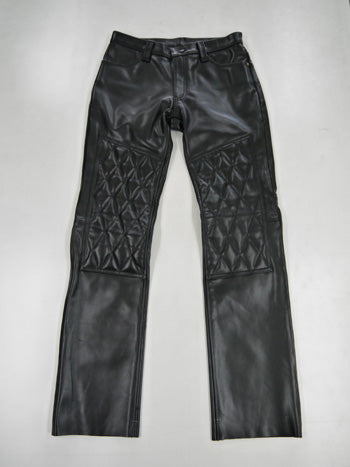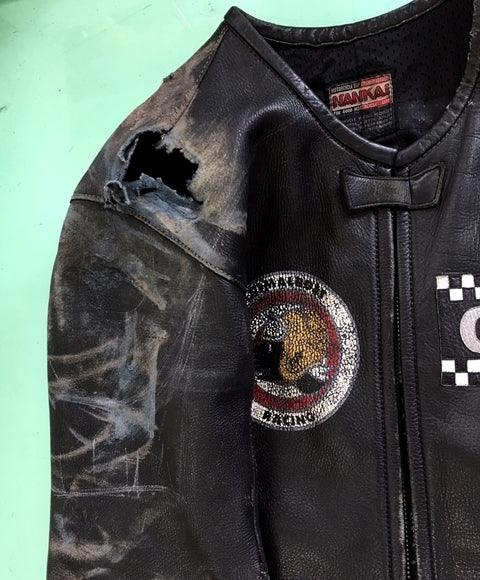repair&custom 17

At KADOYA Headquarters and Headquarters Factory, we not only manufacture leather wear, but also carry out repair work including various customizations. It seems that we often receive requests for repairs from the beginning of autumn to the end of winter every year.
The main object of handling is leather wear, so it seems that the timing overlaps with the time when everyone picks up leather from their wardrobe, but the number of repairs increases dramatically in the season, and it is normal. You will have to wait for the delivery date.
Therefore, if you bring it a few months before you start wearing it, you may be able to start wearing it just right. Well, various repair requests are delivered to the head office factory.
Among them, the most common repairs are zipper replacement and sleeve length stuffing. This time, I will touch on these two repairs a little.
Zippers are often replaced, especially the front zipper (mainly the front part of the jacket), and damage to the zipper insert (bottom part) is the standard repair.

The most common fasteners consist of a combination of polyester tape and metal parts called elements (nickel silver, red brass, aluminum, zinc alloy, etc.).
Leather jackets and zippers are usually sewn together in the order of "leather, polyester, metal, metal, polyester, and leather".
Polyester tape is inherently very strong and usually has a reinforcing coating around the box at the bottom of the zipper where it is most susceptible to damage.
However, since the tape itself is not so thick, the tape part sandwiched between leather and metal tends to tear first.
Unfortunately, if the tape breaks, you are out. Even if you can extend the life of the torn part by overlocking it, it won't last very long.
Similarly, there are many cases where the left and right elements (metal teeth) around the bottom of the fastener do not mesh.
If you try to pull up the slider forcefully when it is not fully inserted into the slider (the part with the pull tab), the element may be distorted. may fall into
Even if you can temporarily force the distorted element, this is also a short-lived emergency measure, so you will end up replacing the fastener.
Most of the tape breakage mentioned earlier seems to be caused by friction when inserting and removing the slider.
When inserting the slider, if you insert it at a good angle, the tape and the element will fit without contact.
It's a bit nerve-wracking, but just by being a little more conscious of how you handle the slider, you can extend its life considerably in both cases.

When stuffing the sleeves, most of them are cut from the cuff side.
Most motorcycle jackets have zippers on the cuffs. When shortening the sleeve length, there are two ways to shorten the sleeve length: one is to cut the zipper and shorten it, and the other is to remove the zipper once and move it without cutting it to shorten the sleeve length.
Both have advantages and disadvantages, and may not be possible depending on the original structure.

It is possible to fill from the armhole (shoulder side), but there is a relationship with the body (torso), so if some conditions including the overall size and silhouette are not met, other parts will be inconvenient. It is not a method that can be handled at any time, such as it occurs or the room around the waist is cut.
Occasionally, there are rare cases where you think the sleeves are long, but there is actually another cause, and there is no need to shorten the sleeves, or there is no point in shortening the sleeves.
In any case, we are working on an important jacket, so please consult with KADOYA staff and find a satisfactory method.
There is no end to mentioning examples of repairs and customs, so I would like to touch on it some other time.






